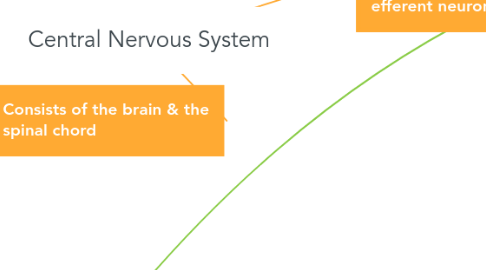Central Nervous System
by lol Backup


1. Consists of the brain & the spinal chord
2. Peripheral Nervous System
2.1. The Peripheral Nervous system connects the brain and spinal chord to the rest of the body
3. Somatic Nervous System
3.1. -The Somatic Nervous System is made up of axons responsible for converting messages from Sense Organs -> CNS or CNS -> Muscle. Essentially, it controls our voluntary movements, such as kicking a soccer ball
4. Sympathetic Nervous System
5. -Network or neurons that prepare the body for a 'fight or flight' response. -Heightened Sympathetic activity would include: -increasing your heart rate or decreasing digestive activity. The ultimate goal, is to save the boys resources. It works with the parasympathetic nervous system in a "push-pull" manor and intact can be activated by the same stimuli
6. -Neurons that send information to body parts/organs leave the brain/central nervous system by efferent neurons
6.1. -Efferent Neurons Branch off to numerous organs/limbs throughout the body.
6.1.1. Each neuron has a receptor that becomes depolarized during an activation signal
6.1.1.1. -If the signal is pain for example, specialized pain receptors send the pain signal back to the brain by afferent neurons so that the body can perform the appropriate response.

